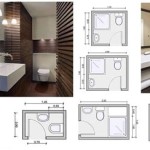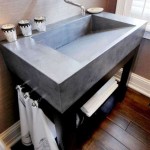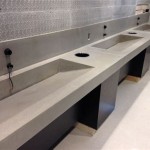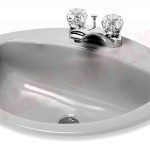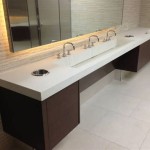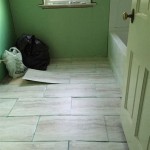How To Wire A Bathroom Extractor Fan With Light
Wiring a bathroom extractor fan with a light involves connecting the fan and light to the electrical circuit to effectively remove moisture and odors from the bathroom while providing illumination. This task requires a strong understanding of electrical wiring principles and safety procedures. Incorrect wiring can lead to electrical hazards, damage to the fan, or even fire. Therefore, it is crucial to proceed with caution and, if uncertain, consult a qualified electrician.
This article provides a comprehensive guide on how to wire a bathroom extractor fan with a light. It outlines the necessary tools and materials, safety precautions, and step-by-step instructions. The principles discussed here can be applied to a variety of fan models, but it's always recommended to consult the manufacturer's instructions for specific recommendations for your fan. Remember that electrical work can be dangerous, and if you are not comfortable or experienced, it is always best to hire a professional.
Key Point 1: Safety Precautions and Preparation
Before embarking on any electrical project, prioritizing safety is paramount. Electricity is a powerful force, and mishandling it can result in serious injury or death. Therefore, the initial step involves ensuring that the power supply to the circuit you will be working on is completely disconnected. This is achieved by turning off the corresponding circuit breaker at the electrical panel.
After switching off the circuit breaker, it is essential to verify that the power is indeed off. Use a non-contact voltage tester to check all wires in the circuit you will be working on. This tester provides a non-intrusive way to confirm the absence of electrical current, adding an additional layer of safety. Never assume the power is off based solely on switching off the breaker.
Gathering the necessary tools and materials is the next crucial step in preparation. Efficiency and accuracy depend on having the right equipment readily available. The following items are typically required: * A non-contact voltage tester: For verifying the absence of voltage in the wires. * Screwdrivers (various sizes, including Phillips and flathead): To tighten and loosen screws on the fan, wiring terminals, and junction boxes. * Wire strippers: To remove insulation from the wires without damaging the conductors. * Wire cutters: For cutting wires to the correct length. * Pliers: To grip and bend wires as needed. * Electrical tape: For insulating wire connections. * Wire connectors (wire nuts or push-in connectors): To safely and securely connect wires. * A drill with appropriate drill bits: For creating mounting holes for the fan housing and electrical boxes (if necessary). * A level: To ensure the fan is mounted straight. * Safety glasses: To protect your eyes from debris. * Gloves: To provide insulation and protection while working with wires. * A flashlight or headlamp: To provide adequate lighting in the work area. * The bathroom extractor fan with light and its mounting hardware. * Electrical wiring (typically 14/2 or 12/2 NM-B cable, depending on local codes and the circuit's amperage). * A junction box: If one is not already present, you'll need a junction box to safely house the wire connections. * Cable clamps: To secure the wiring to the junction box.
It is also highly advisable to carefully review the wiring diagram provided with the extractor fan. This diagram will illustrate the proper connections for the fan motor, light fixture, and incoming power supply. Understanding this diagram before starting the wiring process will significantly reduce the risk of errors and ensure correct operation of the fan and light.
Key Point 2: Wiring the Fan and Light
The wiring process begins with carefully routing the electrical cable from the existing circuit to the location where the extractor fan will be installed. This may involve running the cable through walls or ceilings, ensuring that it is properly secured and protected along the way. The cable must be secured to studs or joists using cable staples or other appropriate fastening devices.
Once the cable has been routed to the location, it needs to be connected to a junction box. If one isn't already present, install one, making sure it is securely mounted to a structural member. Thread the cable into the junction box through a cable clamp, which will secure the cable and prevent it from being pulled out accidentally. Ensure that the cable clamp is properly tightened.
Next, prepare the wires by stripping the outer sheathing of the cable and then carefully stripping the insulation from the individual wires. Use wire strippers to remove the insulation without nicking or damaging the copper conductors. Expose about ¾ inch of bare wire for each connection.
The wiring connections inside the junction box will typically involve connecting the following wires: *
Black wire (live/hot):
This wire carries the electrical current from the circuit breaker. *White wire (neutral):
This wire provides the return path for the electrical current. *Green or bare copper wire (ground):
This wire provides a safety path for electrical current in case of a fault.The specific wiring configuration will depend on whether you want the fan and light to operate independently or together. If you want them to operate together, you can connect the black wire from the incoming power supply to the black wires of both the fan and the light using a wire connector. The white wire from the incoming power supply should be connected to the white wires of both the fan and the light. The ground wire from the incoming power supply should be connected to the ground wire of the fan and, if applicable, the ground wire of the light fixture. Ensure each connection is tight and secure.
If you want the fan and light to operate independently, you will need a three-wire cable (black, white, red, and ground) running from the switch. The black wire from the power source connects to the common terminal on the switch. One of the other "traveler" wires (red, for example) connects to the black wire going to the fan, and the other connects to the black wire going to the light. The white wires are connected together, and the ground wires are connected together. This requires running a suitable cable to a double-switch location.
Regardless of the wiring configuration, ensure that all wire connections are secure and properly insulated. Use wire connectors, such as wire nuts or push-in connectors, to join the wires together. Twist the wires together tightly before applying the wire connector, and then twist the wire connector until it provides a firm grip. After securing the wire connector, wrap the connection with electrical tape for added insulation and protection.
Once all the wiring connections are complete, carefully tuck the wires into the junction box, ensuring that they are not pinched or strained. Secure the cover of the junction box to protect the connections and prevent accidental contact with the wires.
Key Point 3: Testing and Final Installation
After completing the wiring, it is crucial to test the fan and light to ensure they are functioning correctly. Before restoring power to the circuit, double-check all wiring connections to ensure they are secure and properly insulated. Remove all tools and materials from the work area.
Turn the circuit breaker back on to restore power to the circuit. Test the fan and light by switching them on and off. Verify that the fan operates smoothly and quietly and that the light provides adequate illumination. If the fan or light does not work, or if there are any unusual noises or smells, immediately turn off the circuit breaker and re-examine the wiring connections.
If the fan and light are working correctly, proceed with the final installation of the fan housing. Following the manufacturer's instructions, mount the fan housing to the ceiling or wall, ensuring that it is securely attached and level. Connect the fan motor and light fixture to the fan housing, again following the manufacturer's instructions.
Finally, install the fan grille or cover, securing it properly to the fan housing. Ensure that the grille or cover is clean and free of any obstructions that could impede airflow. Clean up the work area, removing any debris or leftover materials.
It is vital to re-emphasize the importance of adhering to local electrical codes and regulations. These codes are designed to ensure the safety and integrity of electrical installations. Consulting with a qualified electrician is highly recommended if there are any doubts or uncertainties about the wiring process. A professional electrician can provide expert advice and ensure that the installation is performed safely and correctly.
Proper ventilation in a bathroom is essential for preventing moisture buildup, which can lead to mold growth and structural damage. A correctly wired and functioning bathroom extractor fan with light contributes significantly to maintaining a healthy and comfortable bathroom environment. Regular maintenance, such as cleaning the fan grille and motor, will prolong the life of the fan and ensure its continued effectiveness.

Extractor Fan Wiring Diywiki

How To Wire A Bathroom Extractor Fan With Timer Home Electrical Wiring

Extractor Fan Wiring Diywiki

How To Wire A Bathroom Extractor Fan With Timer Diy Doctor

Extractor Fan Wiring Diywiki

Extractor Fan Wiring Diywiki

Understanding Extractor Fan Wiring

How To Wire Bathroom Fan

Extractor Not Staying On Lighting Circuit Electrics Kitchen Bathroom Buildhub Org

How To Wire An Extractor Fan Or A Second Light From Ceiling Rose And Pendant

